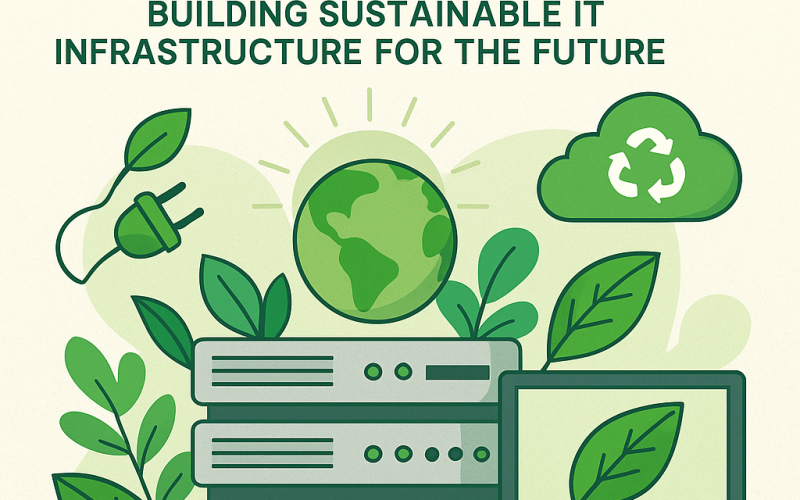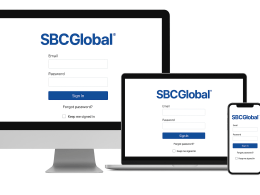In an era where climate change and environmental concerns dominate global discussions, the IT industry is facing increasing pressure to become more sustainable. As digitalization accelerates, so does the carbon footprint associated with servers, data centers, and energy-intensive computing systems. Enter Green IT—a strategic approach to designing, managing, and operating IT infrastructure in an environmentally responsible way.
This blog explores how Green IT is shaping the future, the technologies driving the movement, the benefits it offers, and what businesses can do today to build sustainable IT infrastructure that not only meets performance needs but also reduces environmental impact.
What Is Green IT?
Green IT, also known as green computing, refers to environmentally sustainable practices in the design, use, and disposal of IT systems. It encompasses energy-efficient hardware, optimized software solutions, eco-friendly data centers, and sustainable management policies across the IT lifecycle.
The goal is simple: minimize the negative impact of IT operations on the environment, reduce energy consumption, and promote the use of renewable resources—all without compromising performance or scalability.
Why Green IT Matters Now More Than Ever
The global demand for computing power is growing exponentially. According to research by the International Energy Agency (IEA), data centers alone account for nearly 1% of global electricity demand. With the surge in AI, cloud computing, IoT, and blockchain technologies, this number is expected to increase significantly.
Without intervention, the environmental impact of digital infrastructure could become unsustainable. Green IT is not just about being socially responsible—it’s about future-proofing business operations in a resource-constrained world.
Key Drivers of Sustainable IT Infrastructure
Let’s look at the core components that are making Green IT possible:
1. Energy-Efficient Data Centers
Modern data centers are at the heart of IT operations. These facilities consume vast amounts of energy for processing and cooling. To make them more sustainable, businesses are:
-
Implementing virtualization to reduce hardware needs
-
Adopting liquid cooling systems instead of traditional air-based methods
-
Using renewable energy sources such as solar and wind
-
Building modular data centers that scale efficiently with demand
The result? Lower energy bills, less waste, and a smaller carbon footprint.
2. Cloud Computing & Virtualization
Cloud platforms reduce the need for on-premises hardware by offering scalable, pay-as-you-go solutions. Virtualization enables a single physical machine to run multiple virtual machines, optimizing resource use and reducing the number of servers required.
Public and hybrid cloud providers often operate highly efficient data centers powered by renewable energy, making cloud migration a critical step toward sustainable IT.
3. Lifecycle Management & E-Waste Reduction
IT equipment has a finite lifespan. Managing the lifecycle of devices—procurement, use, and disposal—is crucial for minimizing waste and maximizing sustainability.
Companies are now:
-
Sourcing recyclable or biodegradable hardware
-
Donating or repurposing old equipment
-
Partnering with certified e-waste recyclers
-
Using asset tracking tools to optimize usage and prevent over-provisioning
4. Green Software Engineering
Green IT isn’t just about hardware. Efficient code can significantly reduce the energy consumed by applications. Developers are focusing on:
-
Optimizing algorithms for reduced processing time
-
Minimizing background resource usage
-
Avoiding unnecessary data transfers
-
Leveraging low-power programming practices
This helps reduce CPU cycles, lower energy consumption, and improve overall system efficiency.
5. Sustainable Procurement Policies
Green procurement means choosing vendors and service providers committed to sustainability. Whether it’s buying ENERGY STAR-certified devices or working with green-certified hosting providers, these decisions have ripple effects across the supply chain.
Businesses are increasingly asking suppliers to prove their environmental credentials through certifications like ISO 14001, EPEAT, and LEED.
Benefits of Green IT for Businesses
Sustainability in IT isn’t just good for the planet—it’s good for business. Here’s why:
✅ Reduced Operational Costs
Energy-efficient hardware and smarter cooling systems directly reduce electricity consumption and operational expenses.
✅ Improved Brand Image
Consumers and clients are increasingly drawn to companies that demonstrate a strong environmental commitment.
✅ Regulatory Compliance
Many regions have introduced legislation around energy usage and carbon emissions. Green IT helps companies stay ahead of the curve.
✅ Employee Engagement
Sustainability initiatives can boost morale and attract environmentally conscious talent.
✅ Competitive Advantage
Early adopters of Green IT often gain a competitive edge by aligning with future-focused technologies and standards.
Challenges in Adopting Green IT
While the benefits are compelling, the road to Green IT isn’t without obstacles. Common challenges include:
-
High upfront investment in energy-efficient technologies
-
Complexity in retrofitting legacy systems
-
Lack of awareness or expertise within IT teams
-
Difficulty in measuring and tracking emissions
However, these hurdles can be overcome with strategic planning, the right partnerships, and a phased implementation approach.
Steps to Building a Sustainable IT Infrastructure
Here’s how your organization can start embracing Green IT:
-
Assess Your Current Footprint
Use tools to audit energy usage and emissions across your IT infrastructure. -
Set Measurable Sustainability Goals
Define clear targets—like reducing energy consumption by 30% in three years. -
Modernize Equipment
Replace outdated servers, switches, and systems with energy-efficient alternatives. -
Migrate to the Cloud
Consider cloud solutions with green certifications and efficient resource utilization. -
Adopt Virtualization and Containerization
Maximize existing hardware efficiency by running multiple workloads on fewer systems. -
Use Renewable Energy
Shift to green energy providers where available, or invest in on-site solar or wind generation. -
Engage Your Workforce
Train teams on sustainable IT practices and include them in decision-making.
A Real-World Outlook: Localizing the Green Movement
The push for sustainable IT isn’t limited to global tech giants. Small and mid-sized companies are increasingly making strides too. One shining example is how firms offering IT Infrastructure Services In Ahmedabad have begun integrating solar-powered server rooms, eco-friendly cooling methods, and smart automation systems to cut energy waste while meeting growing client demands.
This shows that Green IT is not just a buzzword—it’s an accessible and actionable path for organizations of all sizes.












